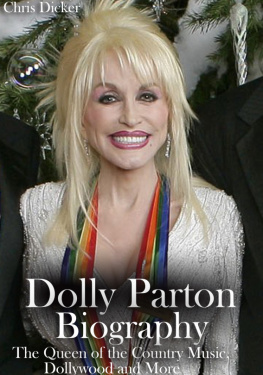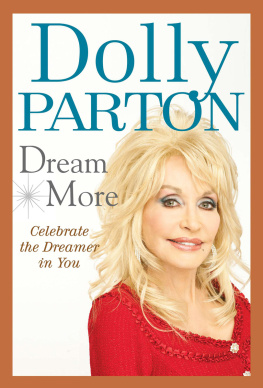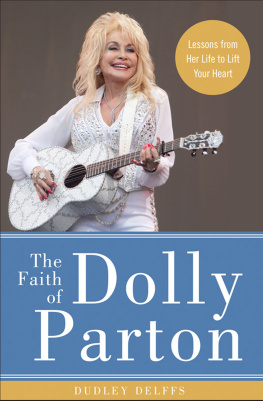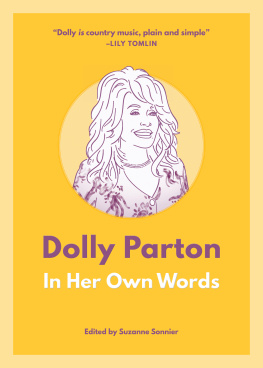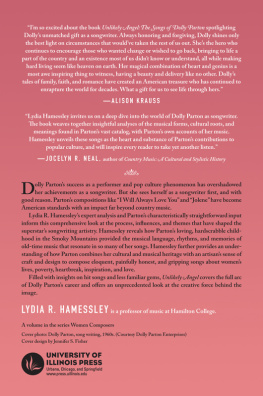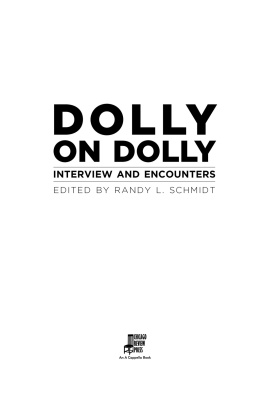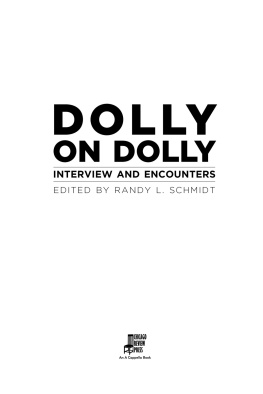Gone Dollywood
New Approaches to Appalachian Studies
Series editors: Marie Tedesco and Elizabeth S. D. Engelhardt
Gone Dollywood: Dolly Partons Mountain Dream, by Graham Hoppe
GONE DOLLYWOOD
Dolly Partons Mountain Dream
Graham Hoppe
Ohio University Press
Athens
Ohio University Press, Athens, Ohio 45701
ohioswallow.com
2018 by Ohio University Press
All rights reserved
Jacket and all drawings by Amy S. Hoppe
To obtain permission to quote, reprint, or otherwise reproduce or distribute material from Ohio University Press publications, please contact our rights and permissions department at (740) 593-1154 or (740) 593-4536 (fax).
Printed in the United States of America
Ohio University Press books are printed on acid-free paper

28 27 26 25 24 23 22 21 20 19 18 5 4 3 2 1
Library of Congress Cataloging-in-Publication Data
Names: Hoppe, Graham, 1984- author.
Title: Gone Dollywood : Dolly Partons mountain dream / by Graham Hoppe.
Other titles: New approaches to Appalachian studies.
Description: Athens : Ohio University Press, [2018] | Series: New approaches to Appalachian studies | Includes bibliographical references and index.
Identifiers: LCCN 2017057480| ISBN 9780821423233 (hc : alk. paper) | ISBN 9780821446379 (pdf)
Subjects: LCSH: Dollywood (Pigeon Forge, Tenn.) | Parton, Dolly. | Amusement parksTennessee. | Southern StatesSocial life and customs.
Classification: LCC GV1853.3.T22 D654 2018 | DDC 791.06/8768893dc23
LC record available at https://lccn.loc.gov/2017057480
For Amy,
thank you for everything.
And for my parents,
thank you for everything else.
Contents
Illustrations
Acknowledgments
The book you hold in your hand wouldnt exist without the work of Gillian Berchowitz and everyone at Ohio University Press. It is with a deep sense of appreciation that I thank them for providing this work with such a fine home.
This book began as a conversation with William Ferris at the University of North Carolina. It is in no small part thanks to his encouragement and enthusiasm that I began to think of this as a book instead of just an intriguing idea. Bernie Herman, the chair of the American Studies Department at UNC, has provided me with invaluable insight into different ways of thinking about Dollywood. I thank them both for their time and for sharing their incredible depth of knowledge.
With a great sense of gratitude I would like to thank Marcie Cohen Ferris, professor in American Studies at UNC, who has supported and championed this text. Her patience, insight, and editing have made this work possible.
With equal gratitude I would like to thank Elizabeth Engelhardt, coeditor of the Series in Race, Ethnicity, and Gender in Appalachia, who encouraged me to expand an academic piece into this book. These scholars have been an inspiration, and the level of care they have given my work has been an honor.
For joining us at Dollywood for several Christmases, I want to thank my in-laws, David and Debbie Stibich. Last, for reading drafts, providing me with support, and being a constant source of inspiration, I would like to thank my parents, David and Melli Hoppe.
For walking with me every step of the way, from our first visit to Pigeon Forge through my applications to graduate school and the final draft of this book, I thank my wife, Amy Hoppe. I love you, always.
Introduction
THIS IS a book about Dollywood.
The natural question that follows is: Why Dollywood? Most people are interested in the place (you probably wouldnt be reading this if you werent), but I dont think enough people have given the place real thought. They might have thought of it as a kitschy destination or a site for a country music pilgrimage or maybe just a place to ride roller coasters. I think it deserves more. I think it deserves real consideration.
Why should we take Dolly Partons theme park seriously? First, Dollywood makes a lot of money and keeps a lot of people employed. It is one of a kindthe only theme park dedicated to the persona of a music icon. When I started this project, I knew that its primary focus was going to be an argument about why Dollywood was a serious part of Dolly Partons deep body of creative work. This book was intended from the beginning to be more like a piece of cultural analysis than a straight history or a biography. If youve come looking for a comprehensive account of Dollywood business deals or insight into roller-coaster construction, Im afraid I dont have much for you. Likewise, if youre looking for gossip and for Partons secrets to be revealed, youll find this volume lacking.
There is history here because history informs Dollywood and Pigeon Forge in ways that are both immediately apparent and more hidden and subtle. There is a bit of politics here too. I know that people dont usually like to be confronted with politics at their vacation destinations, but it cant be helpedwe have to talk politics.
I expected a project about Dollywood to revolve almost exclusively around Partons massive influence, and for the most part that has been the case. However, this story has a few tangential paths that might not be apparent at first glance. The biggest is the Pigeon Forge Parkway, the main thoroughfare of Sevier Countys tourist industry. Well also spend some unexpected time with the celebrity chef Paula Deen, whose restaurant in Pigeon Forge marked the beginning of her comeback from a career-damaging scandal. Speaking of food, theres a stop at Cracker Barrel, the Tennessee-based chain of restaurants that has become a national symbol for what it means to sell the South and for how southern nostalgia can be a complicated and powerful thing.
Despite these detours, the heart of the book is Parton. She sells her own vision of the South, one that speaks to the pride and resilience of Appalachia. I said we wont spend much time dissecting Partons biography, but we will spend some time with Partons public personathe stories she tells in interviews, her autobiography, films, and songs. Partons persona is such an integral part of her fame and of Dollywood that it is impossible to have any kind of discussion about her without looking at it. She began as the dirt-poor daughter of a sharecropper, a mountain girl who sang songs into a tin can perched on top of a tobacco stick and pretended it was a microphone. She grew into a songwriter and performer who first gained fame as Porter Wagoners sidekick, but she quickly outgrew the partnership and said good-bye to him with one of the most famous and most successful songs of all time, I Will Always Love You.
As a solo artist Parton became one of country musics biggest talents, crossing over first into pop music and then into movies with roles in films like 9 to 5 and Steel Magnolias. Shes won just about every award you can imagine, including a Kennedy Center Honor and the National Medal of Arts.
Along the way Parton has always tried to bend fame in a positive direction. A staunch advocate of education, she founded Dolly Partons Imagination Library, a literacy charity that has distributed more than sixty million books to children all over the world. Galvanized by her fathers illiteracy, Parton understood firsthand how literacy was a key to success. Communities served by the program have consistently shown improved literacy rates and test scores. Parton has also been an advocate for the natural landscape she grew up in. She served as an ambassador for the Great Smoky Mountains National Park during the parks seventy-fifth anniversary celebration. She has also sponsored the American Eagle Foundation, a not-for-profit organization housed at Dollywood that specializes in the rehabilitation and conservation of the bald eagle, a suitably patriotic crowd favorite, and other birds of prey.





